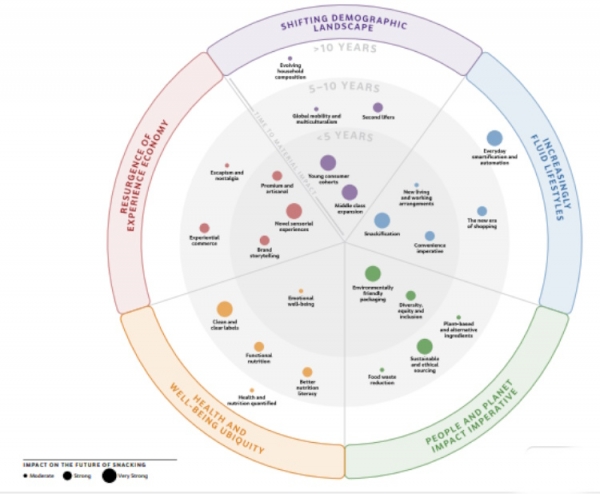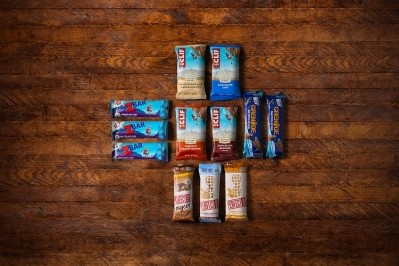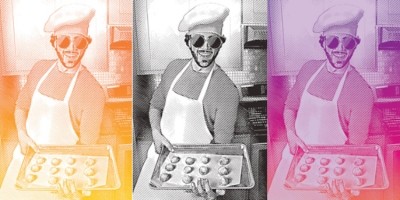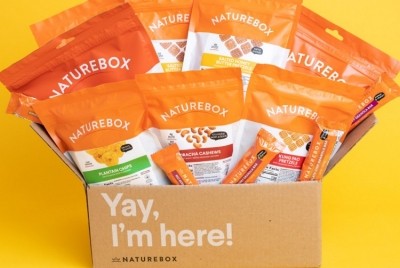The smartification of the snackification trend

Commerce has seen a major change in direction and tempo over the past two decades, the catalyst of which is the widespread use of the internet and mobile technology. Once a domain limited to industrial and business applications, smart tech is increasingly being used by consumers at home and to enhance the shopping experience.
Global ecommerce is predicted to grow by 9.4% in 2024, making up over 20% of total retail sales, according to Mondelez’s 2024 State of Snacking report. The Oreo maker’s fifth annual narrative – devised in partnership with the Food Institute – lists 25 of the most powerful trends expected to shape the future of snacking over the next decade. We explore just a few here.
A trends prioritization and evaluation exercise by the Mondelēz Foresight team and its partners developed a Snacking Trend Radar, which outlines five macro trends that are expected to change the future of food and snacking in the near-, mid- and long-term.
Welcome to the digital age
As consumers seek to balance work, leisure and personal commitments, there is a growing demand towards convenient, on-the-go snacking options that cater to the new dynamic reality.
The snackification trend has undoubtedly taken root, with six out of 10 global consumers veering towards ‘intuitive eating’ and ‘grazing’ practices, prompted by hunger signals instead of predefined and timed mealtimes [Mondelez]
This mindfulness in consumption is driving a bigger focus on snacking throughout the day – sparking the need for snacks that offer more than just a moment of bliss. Snacks provide quick nutrition, convenience, flexibility and time savings for today’s increasingly busy consumers, but they’re also on the lookout for targeted benefits for things like gut and heart health, cognitive and longevity boosts, and so forth.
‘Snackification is likely to grow further, fueled by the influx of young urban middle-class consumers in developing markets and increasing availability of more nutritionally balanced snacks that are well positioned as meal replacement,’ reports Euromonitor.
Additionally, 37% of global consumers find cooking stressful, while 41% of people who work from home reporting an increase in snacking [Kantar].
This new routine has even prompted more talk about snacks, according to NextAtlas.
‘Flexible working arrangements have impacted consumer rituals and routines. For many people, morning rush hours and commuting have been replaced with new practices with conversations about ‘morning affirmations’ and ‘breakfast’ increasing in popularity by 97% and 56% YoY respectively. Growing need for new at-home routines that facilitate the transition from the ‘professional self’ to the ‘after-work self’ has increased the discussions about relaxing and unwinding properties of food and snacks (+30% YoY) for this purpose.’
The digital age has made convenient on-the-go snacking a preferred choice for 53% of consumers [Mondelez]. This is generationally evidenced with 14% of Gen Z and 12% of Millennials regularly replacing meals with snacks versus 6% of Boomers [Euromonitor].
Increased screen time has also ushered in a new era of shopping. Integrated commerce has become a standard – a mix of both digital and physical channels – with rapid delivery e-com services, streamlined checkout and pickup options allowing instant purchases nearly anytime or anywhere.
The tailored experience
Social media is a huge enabler - and a powerful tool to motivate change - with global revenue generated by social commerce expected to surpass $2 trillion by 2024 [Insider Intelligence].
In fact, with 74% of all consumers and 84% of Millennials and Gen Z reporting to having already bought or tempted to buy a snack after seeing it online [Mondelez], savvy marketers are increasingly embedding their products into relevant info channels, such as ‘virtual social cooking’ and online gaming activities, to maintain consumer loyalty and capture new markets.
Smart devices offer unprecedented levels of convenience, efficiency, and control. They learn from user interactions, adapting and automating tasks to suit individual preferences. Already used by 43% of the US population voice-activated assistants have access to personal data [Insider Intelligence], routines and preferences, health and fitness state and can create tailored nutrition plans, monitor calorie intake and even autonomously manage grocery shopping.
The tech makes online grocery shopping a more natural and convenient process, with 77% of Americans who use smart home devises noting an improvement to the overall quality of life. Another 52% are on the cusp of adopting products and services that can anticipate their needs [Kantar].
‘Technology is making consumers lives easier, with over seven in 10 global consumers stating that it helps them get ahead, reports Kantar Monitor.
‘As consumer devices become smarter, they are transitioning from merely sensing to anticipating. In the future, data collected by various devices will be integrated into complete personal profiles, unlocking nuanced needs and behavior predictions at a micro-level. Such ecosystems will be ubiquitous in the next iteration of connected life.’
This all promises disruption within the CPG space, adds Mondelez.
‘The significance of convenience for consumers will only grow with time, promoting new products and services. From automated subscription services to smart packaging, the focus will be on providing a seamless, convenient experience that aligns with the consumer’s desire for simplicity and efficiency.’
However, marketers need to be aware of the power within their hands.
‘As personalized AI assistants become more capable and autonomous, routine tasks such as grocery shopping will be increasingly delegated to them. This will require promotion strategies that are effective not only for people, but also for AI algorithm.’











